All products featured are independently chosen by us. However, SoundGuys may receive a commission on orders placed through its retail links. See our ethics statement.
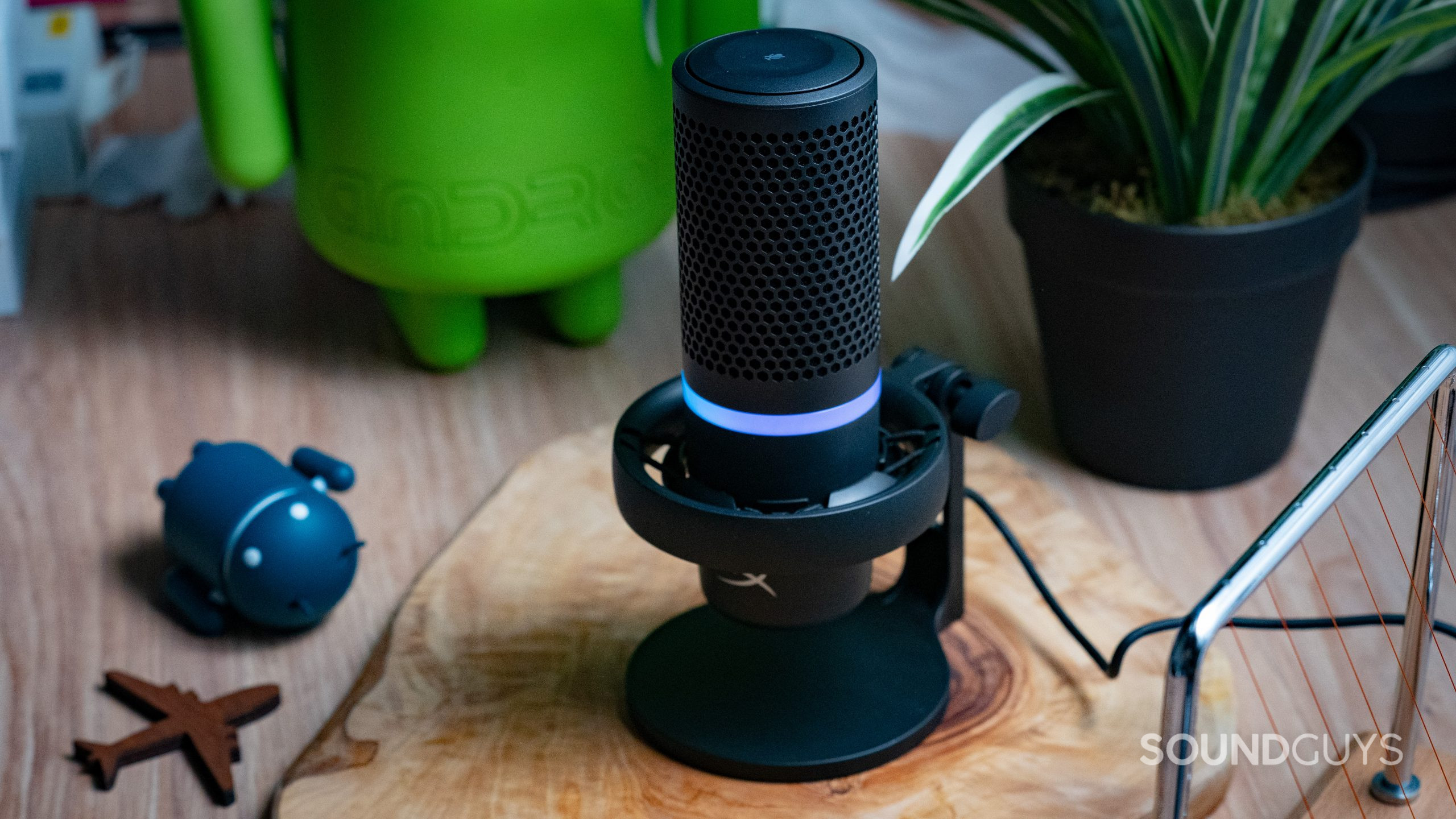
HyperX DuoCast review
September 29, 2022
HyperX DuoCast
The HyperX DuoCast is well built and well featured. Its black metal and tasteful RGB strip design make it look at home in almost any recording environment you might want to put it in. It has two polar pickup patterns and onboard gain adjustment, making it a solid choice for a USB microphone. However, no microphone is perfect. Does the DuoCast’s sound quality match its extensive list of features?
We spent several days with the HyperX DuoCast and found out everything you need to know before adding it to your desktop setup.
Editor’s note: this review was published on September 29, 2022, and is the first version of the article. Updates will follow as the market changes.
The HyperX DuoCast is a somewhat sensitive microphone, making it better for users who can work from a quiet space. This makes it a good choice for podcasters. It’s also a decent option for conference calls, being good at picking up a whole room’s chatter thanks to its omnidirectional microphone mode. Finally, anyone that’s a fan of RGB will surely appreciate its tasteful application on the DuoCast’s RGB strip.
What’s it like to use the HyperX DuoCast?
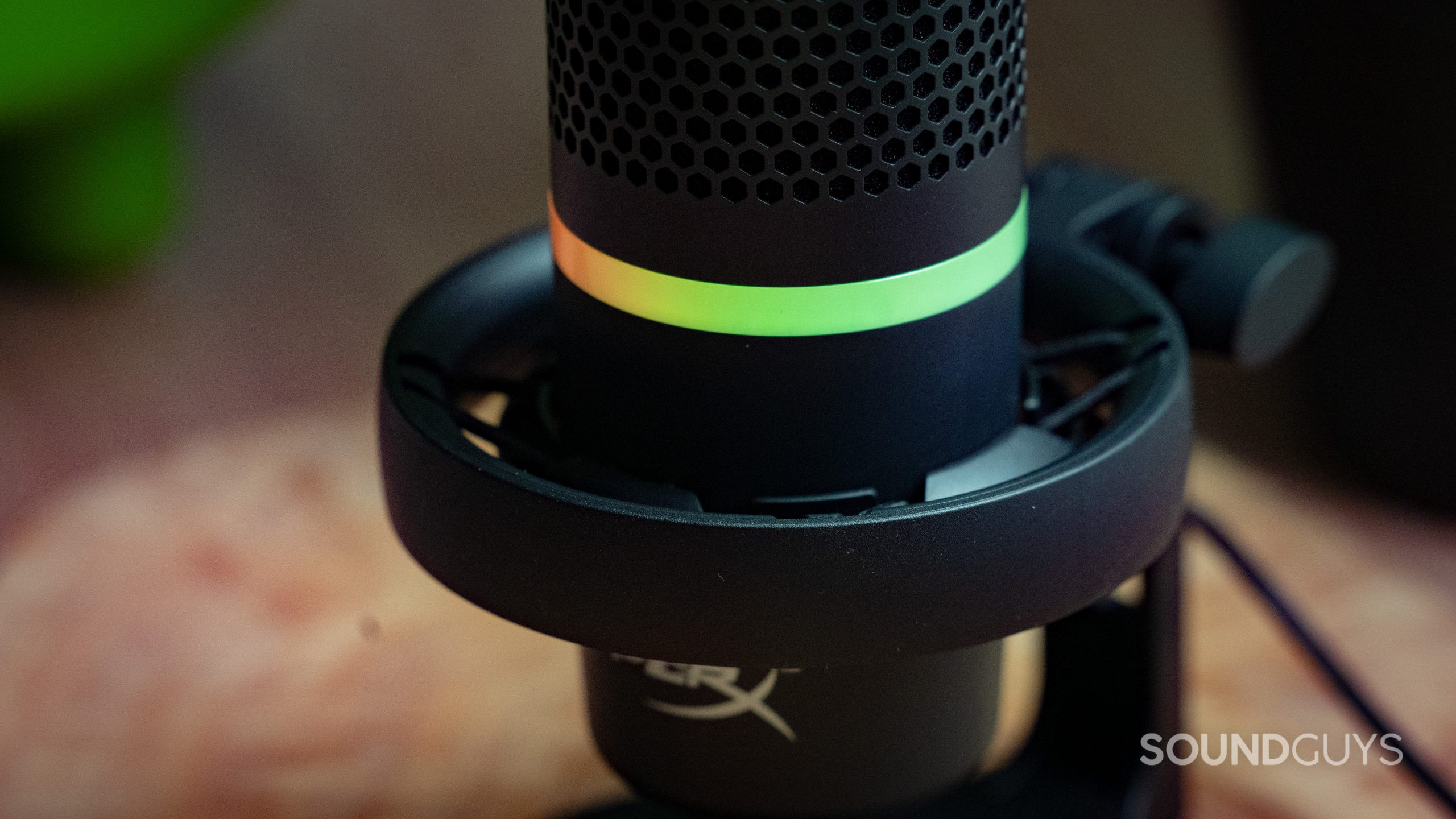
The HyperX DuoCast is a fairly minimal microphone, with a dark metallic outer shell and RGB lighting strip that’s useful and good looking. Through the RGB strip’s color and shape changing, it communicates gain level, the selected polar pickup pattern, and when the microphone is muted. The metal grate surrounding the microphone also has an interior section of foam to act as a pop filter (although the microphone could benefit from a dedicated external pop filter as well).
The DuoCast includes a mounting apparatus that suspends the microphone with elastic bands to prevent vibrations from disturbing the recording. The stand is also made out of a sturdy metal material. The whole assembly is heavy enough to withstand a few knocks without tipping. The biggest downside to this design is that the microphone stand doesn’t have a threaded insert for more professional mounts; there’s an adapter included to solve this.
How do you control the HyperX DuoCast?
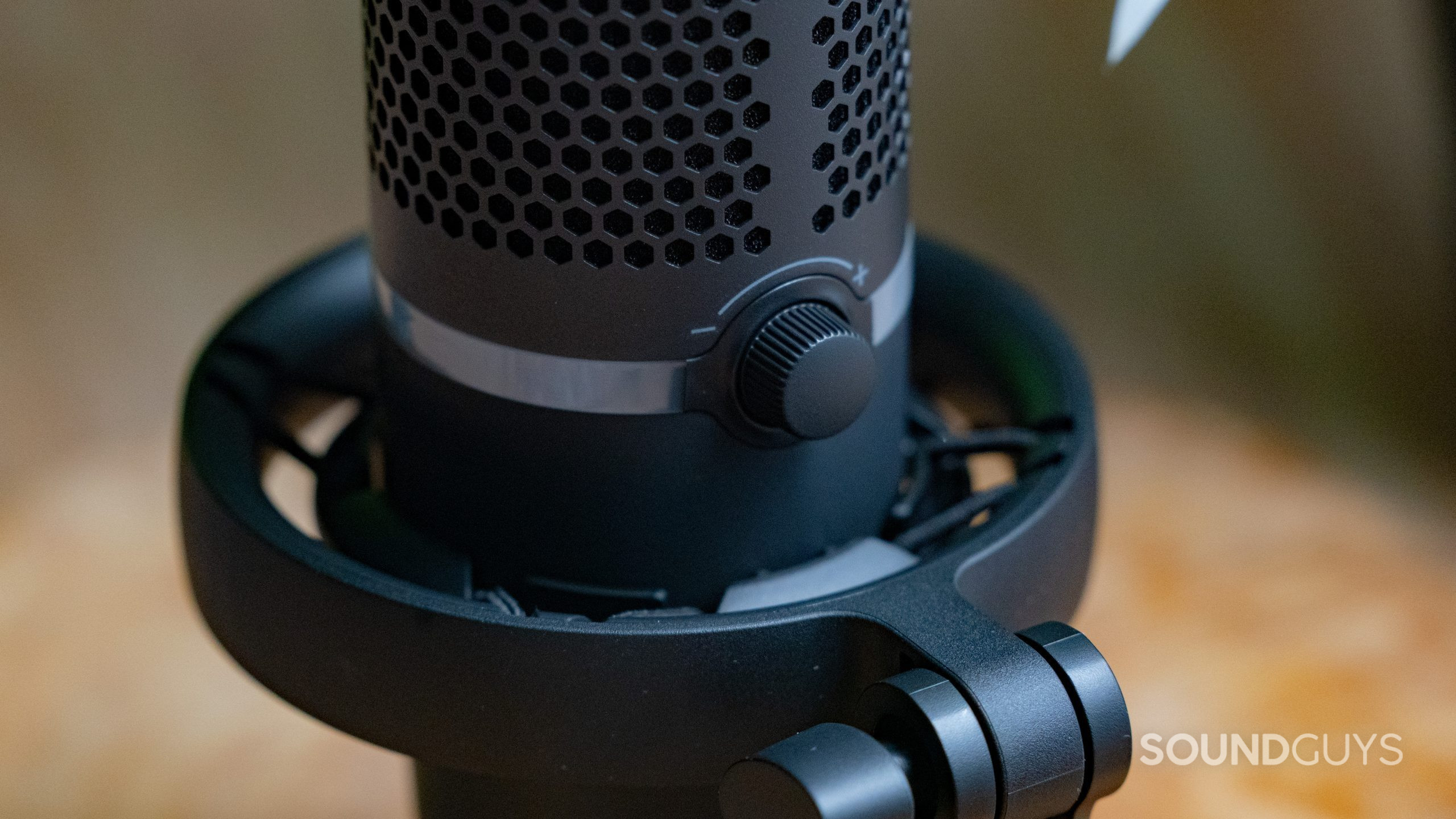
The HyperX DuoCast has several controls available to the user, some more difficult to understand than others. A simple tap on the top of the mic will mute the signal, as indicated by the RGB lighting going completely dark. On the backside of the microphone is a rotary knob that handles the other two controls. You can adjust the gain by turning it to the left or right. Pressing the knob as a button switches between the DuoCast’s omnidirectional and cardioid pickup patterns, which will be indicated by a short animation of the RGB lighting.
How does the HyperX DuoCast connect?
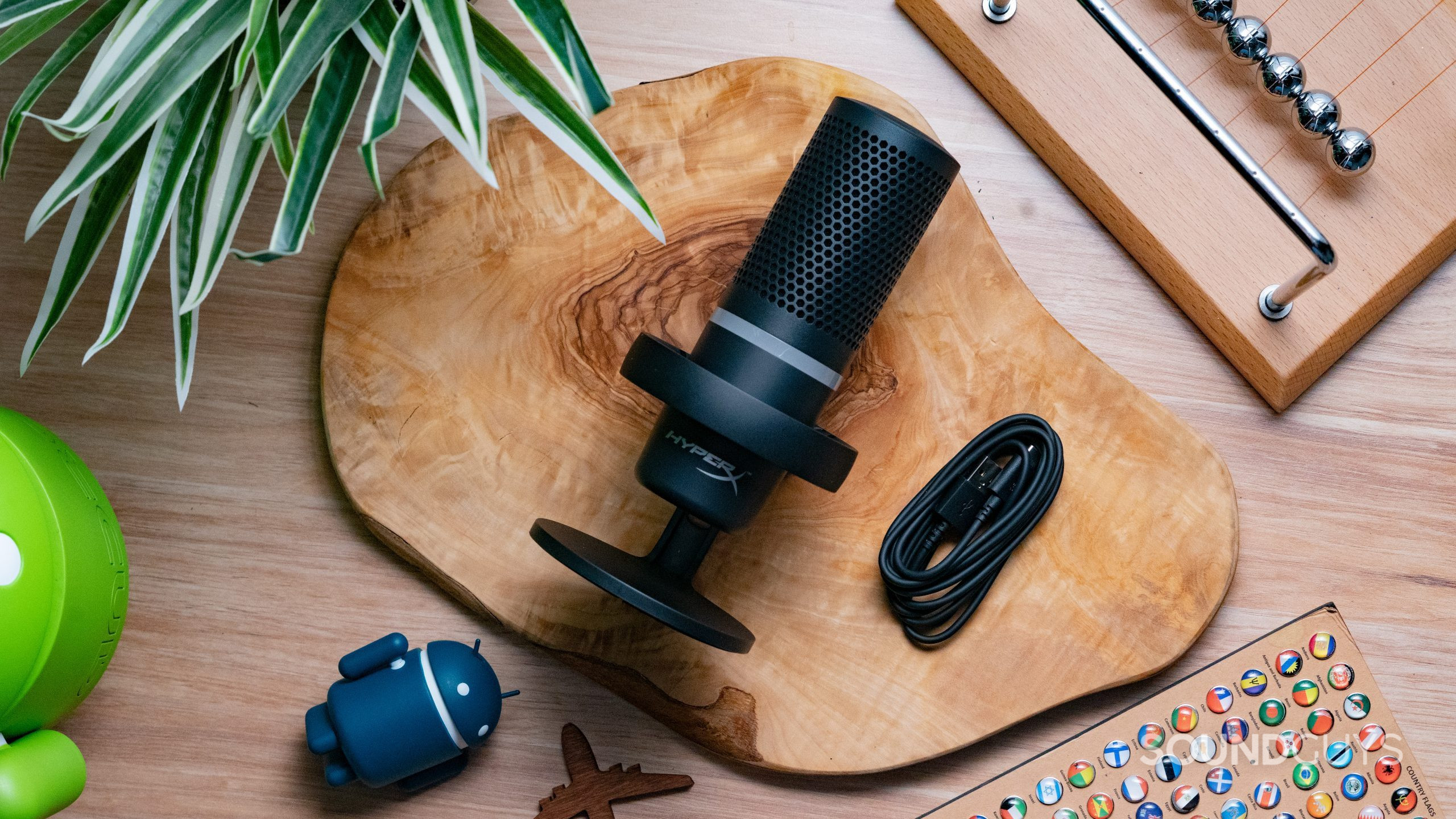
The HyperX DuoCast connects very simply using the included USB-C to USB-A cable. It has no additional support for XLR or other USB standards (you’ll need a USB-A to USB-C adapter to connect it to that particular port). The microphone also includes a 3.5mm jack on the back side next to the USB-C port to monitor the input, and to hear the output of the device it’s connected to. This 3.5mm jack is useful, but the amplifier isn’t particularly powerful (on par with a cheaper smartphone). It also lacks any ability to adjust the sidetone (the relative level of the mic’s in your monitor mix) while using it.
As the HyperX DuoCast is a USB-C microphone, it gets all the power it needs over the USB connection.
How does the HyperX DuoCast sound?
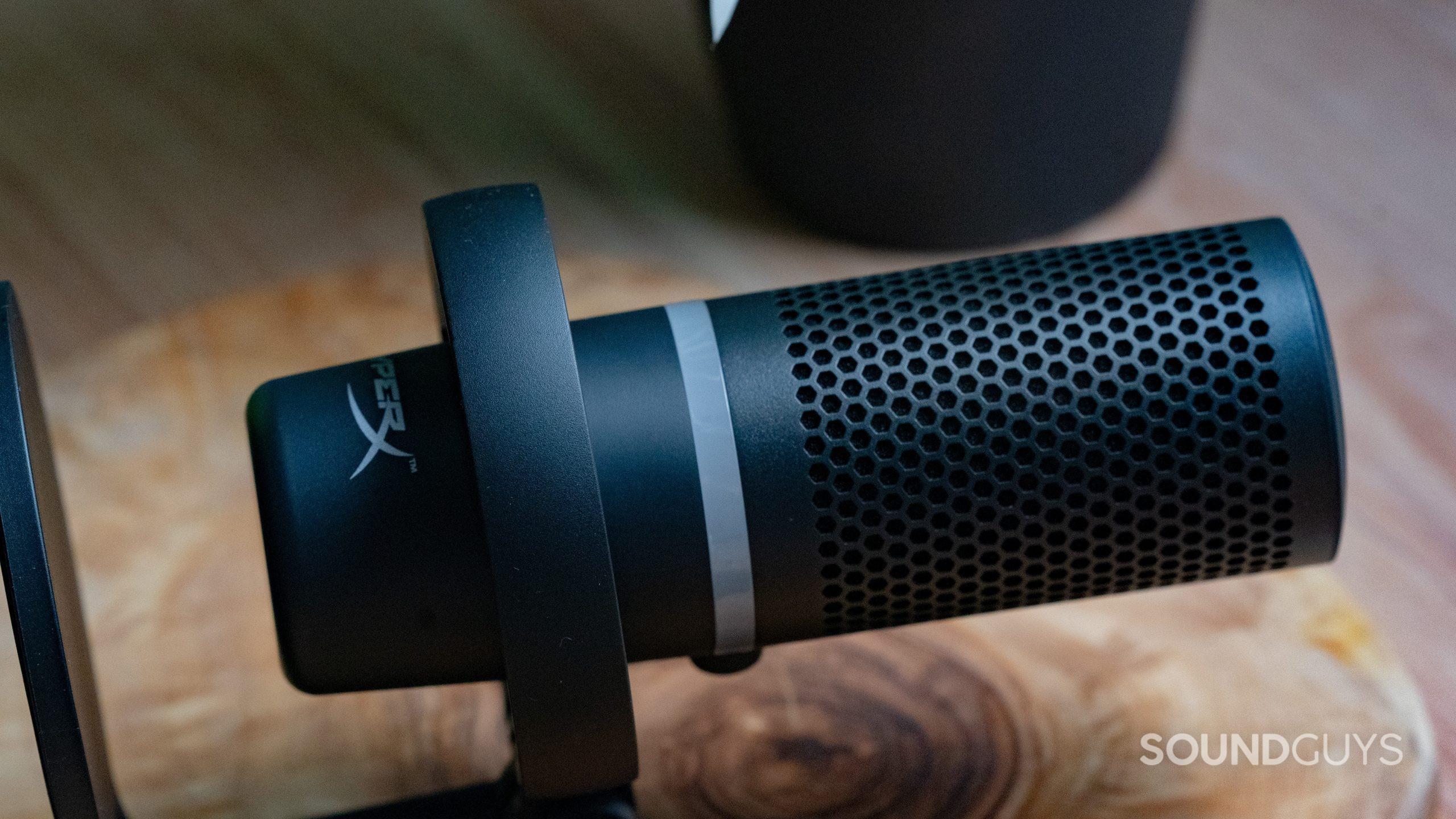
The HyperX DuoCast is an electret-based condenser microphone with two different polar pickup patterns and a built-in foam filter to help handle plosives in speech. It’s fairly versatile thanks to its use of a gain knob and the aforementioned cardioid and omnidirectional pickup patterns. The mic is somewhat on the sensitive side, and not the best choice for noisy environments or spaces shared with others. However assuming you have a quiet (or even better, acoustically treated) space, it’s certainly possible to get usable results from this microphone. This makes it an ideal choice for podcasts or other semi-professional audio work. It’s less ideal for streaming, especially if you’re playing games, as it may pick up some of your keyboard or controller noises. It’s also a decent choice for calls, either professional conference calls with the omnidirectional mode, or with friends.
HyperX DuoCast home office cardioid demo:
HyperX DuoCast home office omnidirectional demo:
How does the microphone sound to you?
Should you buy the HyperX DuoCast?
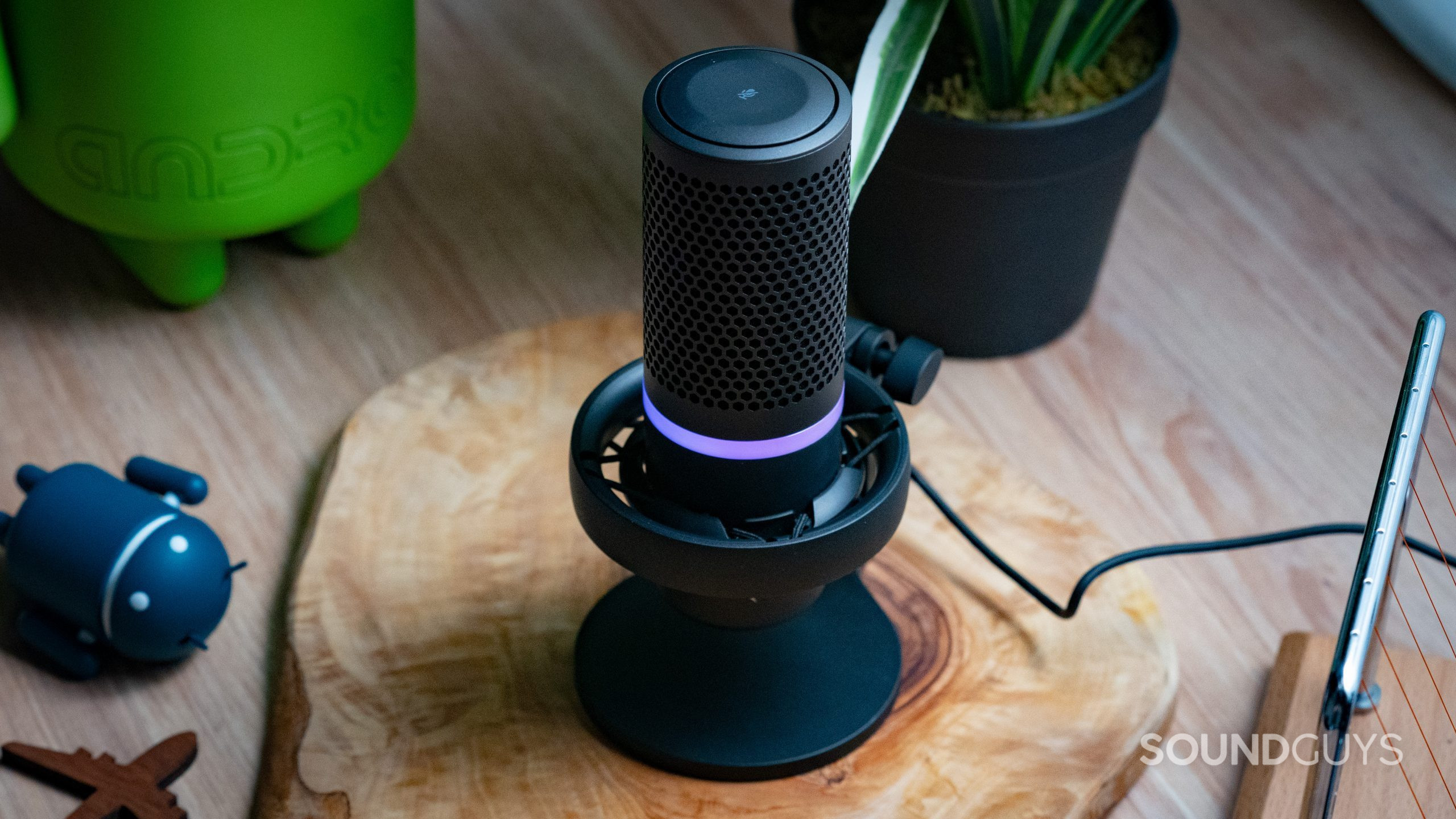
Overall, the HyperX DuoCast’s features make it a fairly good choice for a desktop microphone. I appreciate the versatility of having two different pickup patterns, which makes it useful in group settings like conference calls or podcasts. The build quality is solid, and it has a few different options for how it can be mounted. The main issue is, like the AT2020USB-X, it’s somewhat hard to use if you have a loud keyboard or chatty roommates sharing a space with you. If you’re aware of this and figure you can use it correctly in your environment, it’s certainly a great choice for podcasting, streaming, or just casual calls with friends.

What should you get instead of the HyperX DuoCast?
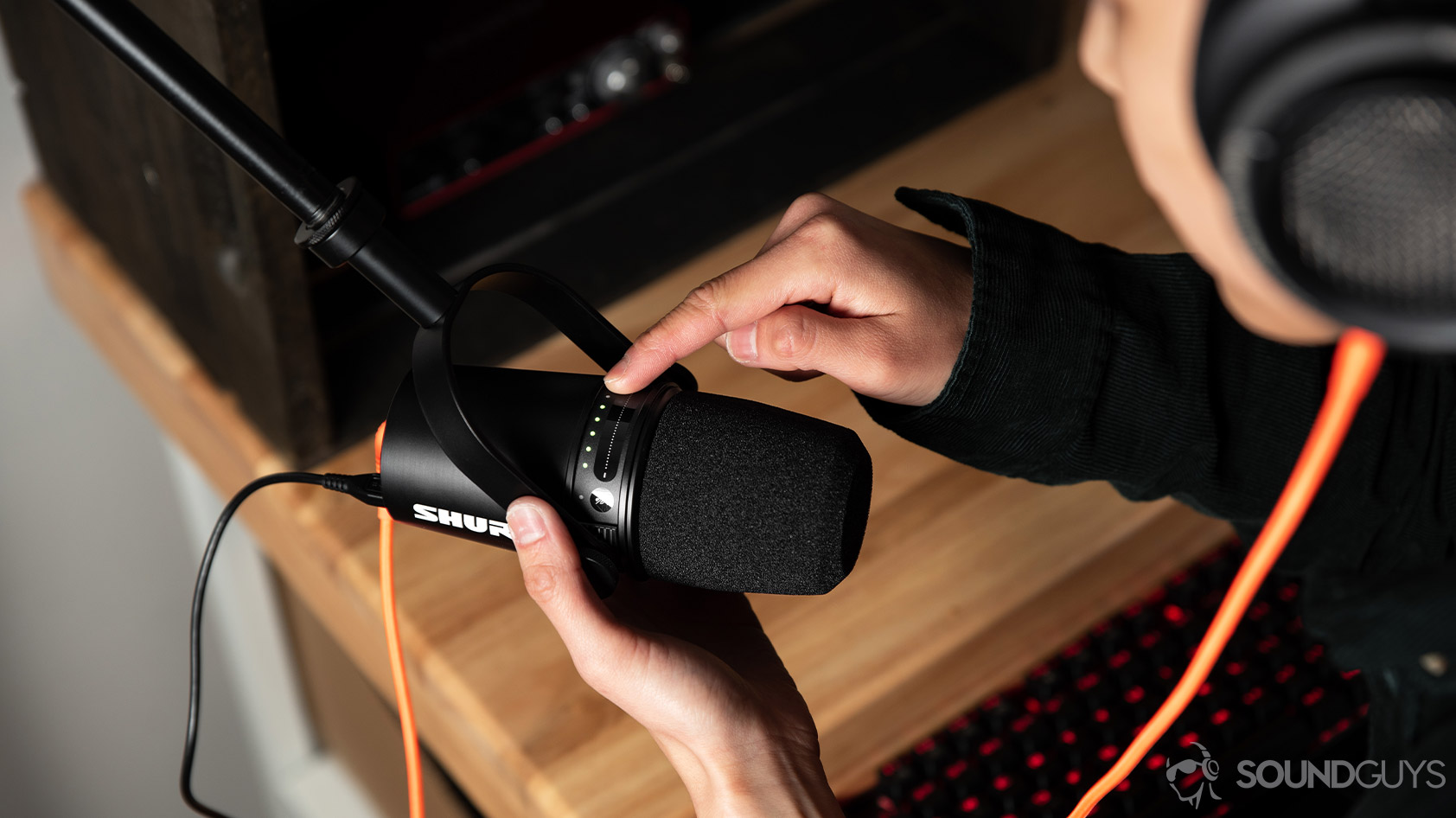
If you’re looking for a similar microphone with more of a professional pedigree, the Audio Technica AT2020USB-X is a relative newcomer to the market—it’s good, though it has no gain control before the analog to digital conversion. Additionally, if you want to stick with HyperX you might want to consider the HyperX QuadCast, which has an expanded selection of pickup patterns and other features. Finally, if you have the budget (and XLR interface for it) you might consider the industry standard Shure SM7B, or the popular Shure MV7.
Frequently asked questions
Yes. Included in the box is an adapter that allows you to connect the HyperX DuoCast to microphone mounts that use a screw-based mounting system. This requires you to disassemble the table mount that the device comes with using the thumbscrew at the joint on the mount. It may also be possible to use other shock mounts aside from the included one, depending on sizing.